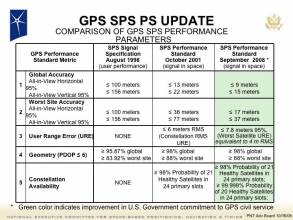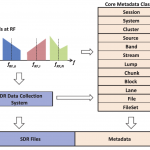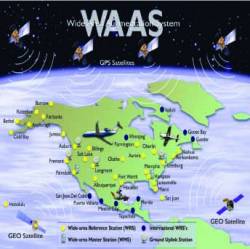
A new GPS Standard Positioning Service Performance Specification (SPS PS) — the first new version since 2001 — brings the level of expected GPS service closer to real-world expectations, although still with conservative margins.
A new GPS Standard Positioning Service Performance Specification (SPS PS) — the first new version since 2001 — brings the level of expected GPS service closer to real-world expectations, although still with conservative margins.
Approved by John G. Grimes, assistant secretary of defense for networks and information integration (ASD NII), the SPS PS commits the U.S. government to meeting and exceeding the new standards, including a signal-in-space (SIS) range accuracy of 4 meters rms (and 7.8 meters, 95 percent of the time). This compares to the previous 6-meter range accuracy.
Another innovation in the new performance standard is the additional of specifications for an “expandable 24-slot constellation” in addition to the current baseline 24-slot constellation. This modification envisions expandable slots in three orbital planes occupied by a pair of satellitesat slots B1, D2, and F2.
The documents also establishes minimum levels of SIS range velocity accuracy and range acceleration accuracy, which were unspecified in the previous version of the SPS PS. A PDF file of the new specification can be downloaded from the website of the National Executive Committee for Space-Based Positioning, Navigation, and Timing.
Although GPS will provide three new modernized civil signals — the L2C that is on the Block IIR and later generations of satellites, the L5 planned for the IIF and later generations, and L1C that will be introduced on the GPS III spacecraft — the performance specifications in the new version of the SPS PS apply only to users of the L1 (1575.42 MHz) Coarse/Acquisition (C/A) signal, because it is the only civil GPS signal that has reached full operational capability at this time, according to authors of the document’s executive summary.
As previously reported, the new SPS document also does not include a commitment to semi-codeless GPS access, because that was already documented in a recently issued DoD Federal Register notice.
In addition to specifying GPS minimum performance commitments, the SPS PS serves as a technical document designed to complement the GPS SIS Interface Specification (IS-GPS-200) — which have taken the place of interface control documents (ICDs) in the Air Force lexicon of technical documentation.
The specification refers to the technical functionality of the GPS space and control segments, not to the GPS user experience. As the new version of the PS itself points out, “These SPS SIS performance standards do not directly represent the end performance users will experience. The standards provide a definition of the components of GPS performance that, when combined with a signal reception environment and assumptions concerning the GPS receiver, allow users to define for themselves the end performance they can expect for their particular application.”
However, an appendix to the SPS PS does set forth some position, velocity, and time (PVT) “performance expectations” for user receiver operations under the new version of the specification. The appendix also serves as a practical guide to help users and equipment designers calculate expected end performance.
Other appendices provide background on development of the SIS performance standard as well as a useful description of key terms, definitions, abbreviations, and acronyms associated with GPS and satellite navigation.
A table (shown above) comparing key parameters of the new spec with past performance standards can be found in a PowerPoint presentation entitled "Update on GPS, PNT Policy, & PNT EXCOM," by Michael Shaw, director of the National Coordination Office for Space-Based PNT, which is downloadable at the office’s website.





